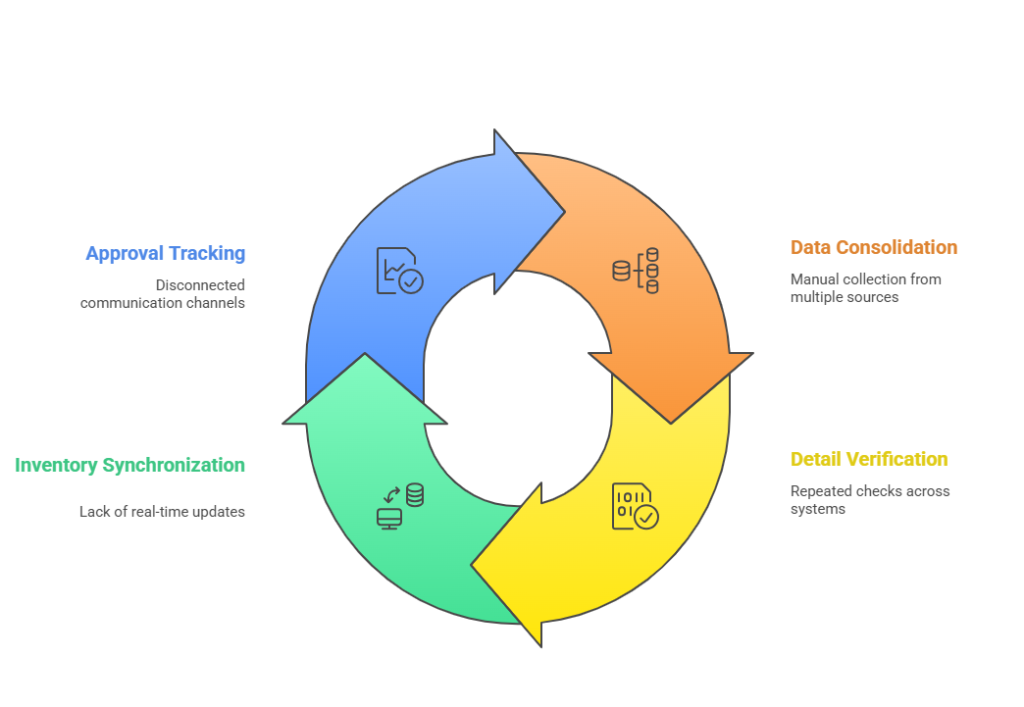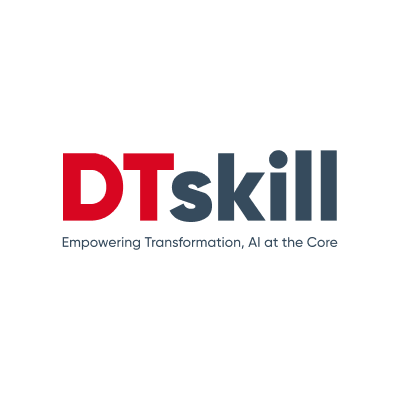Why Purchase Order Capture Must Evolve Now
Every successful manufacturing run begins with the right materials delivered on time, in the right quantity, and aligned with production needs.
At the center of that coordination is one crucial document: the purchase order. It’s the trigger that sets procurement, inventory, and supplier timelines in motion.
And yet, the process of capturing and managing POs needs Manufacturing Procurement Optimization that modern manufacturing demands, making a strong case for purchase order automation in manufacturing.
For many teams, introducing purchase order automation in manufacturing isn’t just about speed; it’s about building a more reliable, connected workflow that supports production without delays or rework.
In operations, even small errors in automated purchase order capture can cascade into delayed shipments, missed production windows, or urgent follow-ups with suppliers.
For manufacturing leaders, solving this isn’t about adopting another digital layer; it’s about embedding accuracy, consistency, and speed into a process that supports the entire supply chain.
That’s where GenE automation for procurement capabilities comes in, bringing structure and intelligence to automated purchase order capture without disrupting the way teams work.
Common Realities in PO Capture Across Manufacturing Teams
Automated Purchase order capture plays a critical role in keeping procurement aligned with production needs. As manufacturing operations expand, the volume and variability of PO data increase, placing more pressure on teams to manage this process efficiently and increasing the need for Manufacturing Procurement Optimization.
While the workflows in place today support core procurement functions, they often require significant manual effort:

- PO data comes in through multiple sources, such as emails, PDFs, and system exports, which must be consolidated manually
- Details such as quantities, part numbers, and vendor information need repeated checks across procurement, inventory, and ERP systems
- PO information may not be immediately linked to live inventory or production schedules, slowing response time
- Approvals and confirmations are tracked through disconnected channels, making it harder to ensure timely follow-through
These common patterns make it harder for teams to move quickly while maintaining accuracy. Addressing them requires tools purpose-built for purchase order automation in manufacturing solutions that can streamline the flow of PO data across the systems and teams that depend on it.
As production volumes increase, purchase order automation in manufacturing becomes a key enabler of consistency, speed, and reduced manual effort.
GenE’s Role
GenE automation for procurement is designed to bring structure, accuracy, and speed to automated purchase order capture without adding complexity to existing workflows. It works across formats and systems, capturing PO data from emails, PDFs, portals, and ERP inputs with minimal manual intervention.
Once captured, GenE automatically validates key field quantities, part numbers, vendor details, and delivery dates against internal records or pre-set rules. This process reflects a strong Generative AI procurement use case, as it enables the system to sync structured data seamlessly across procurement, inventory, and production planning systems.
Reduce procurement errors with AI or duplication and ensure that every PO is accurate, approved, and ready to act on from the moment it enters the system.
For manufacturing teams, this translates into fewer repetitive tasks, faster cycle times, and more dependable handoffs across systems.
Its impact is most visible in three areas that will be discussed ahead: how it standardizes incoming data, connects with live production environments, and simplifies coordination across teams.
Smart Standardization – Learning, Adapting, and Structuring Every PO
In manufacturing, no two purchase orders look exactly alike, but every one of them needs to be processed with speed and accuracy, highlighting the need for Manufacturing Procurement Optimization. GenE automation for procurement brings consistency to this variability by intelligently adapting to different formats and automatically organizing incoming PO data.

- Captures and extracts PO details from multiple formats, including PDFs, email bodies, scanned documents, and ERP screens
- Identifies critical fields such as part numbers, quantities, delivery dates, vendor names, and payment terms, regardless of layout
- Applies machine learning to recognize formatting patterns and improve extraction accuracy over time, across suppliers and documents
- Outputs clean, structured data that flows directly into procurement, inventory, or planning systems without requiring manual cleanup demonstrating a clear Generative AI procurement use case in real-world manufacturing environments
This standardization reduces repetitive tasks, can reduce procurement errors with AI caused by misinterpretation, and creates a reliable foundation for downstream execution.
Live Integration with Inventory and Production Schedules
Purchase decisions are most effective when they reflect real-time production needs. GenE automation for procurement connects procurement with live data to keep operations aligned.
| Capability | What it Enables |
| Real-time syncing with production plans | Orders are placed based on current demand, not static projections |
| Live inventory visibility | Avoids overstocking and duplicate orders by showing up-to-date stock levels |
| Mapping PO items to production needs | Each item in the PO is automatically linked to relevant jobs, timelines, and usage |
| Auto-adjustments to schedule changes | Procurement plans evolve with changes in production, reducing manual intervention |
This real-time alignment allows AI in procurement to support production without delays or inefficiencies.
Faster Approvals and Seamless Supplier Updates

Procurement delays often begin with fragmented approval chains and inconsistent supplier communication.
GenE addresses this by streamlining how purchase orders move through internal checkpoints and how updates reach suppliers.
The platform routes each PO through the right approval flow based on spend thresholds, urgency, or department-level rules no email follow-ups, no waiting on paper trails.
Once approved, suppliers are notified in real time with complete, structured data, reducing the risk of missed details or misunderstandings.
This is a strong Generative AI procurement use case, where automation enhances both speed and clarity in supplier collaboration.
This end-to-end transparency not only accelerates purchase cycles but also builds trust with vendors by keeping everyone on the same page.
Tangible Benefits Across Procurement and Production
When manufacturing teams use GenE, the impact is immediate and measurable. As a PO automation software, every feature is built to support the people and systems responsible for keeping operations on track.
Here’s what leaders can expect:

- Higher PO Accuracy – With context-aware inputs, you can reduce procurement errors with AI, and revisions drop significantly.
- Reduced Turnaround Time – Approvals, supplier updates, and documentation move faster without follow-ups.
- Better Production Continuity – Inventory and schedule alignment ensures fewer last-minute disruptions.
- Fewer Coordination Loops – Cross-functional teams work from the same context and data source.
- More Dependable Supplier Communication – Timely, consistent updates reduce friction and build trust.
These gains create a more connected, responsive AI in procurement environment, one that scales with production goals and supports long-term operational stability.
Conclusion
AI in Procurement plays a pivotal role in keeping manufacturing operations steady and responsive.
GenE enhances this core function by introducing intelligent structure, task-ready PO automation software, and process-level clarity without requiring teams to change the way they already work.
Its value lies in precision and reliability. GenE supports AI in procurement workflows with the context they need, reduces time lost in approvals and coordination, and ensures supplier communication stays timely and aligned.
The result isn’t a reinvention, it’s a meaningful step forward in how procurement supports the pace and demands of production.As manufacturers look to strengthen operational flow and supplier responsiveness, GenE offers a practical and scalable approach, acting as a PO automation software solution that’s rooted in the needs of teams on the ground and built to deliver consistency across the board.
FAQs
1. How does Automated purchase order capture benefit my manufacturing business?
Automated purchase order capture reduces manual data entry errors, streamlines procurement workflows, and ensures timely updates to production schedules. It increases operational efficiency, reduces procurement costs, and minimizes the risk of errors in your purchase orders. It’s a prime Generative AI procurement use case that delivers measurable value through speed, accuracy, and strategic decision support.
2. Can GenE integrate with my existing ERP or procurement systems?
Yes, GenE offers 400+ connectors, allowing seamless integration with popular tools such as SAP, Salesforce, and Jira. This ensures that your purchase order capture and other procurement processes are aligned with your existing systems for a unified workflow, another common Generative AI procurement use case that enables end-to-end automation without disrupting your current operations.
3. What kind of ROI can I expect from automating purchase order capture with GenE?
The return on investment from automating purchase order capture with GenE is substantial. Manufacturers have reported reductions in processing time, cost savings from fewer errors, and improvements in supplier relationships. While ROI varies by company, most users experience a significant boost in efficiency and a reduction in procurement-related costs.
